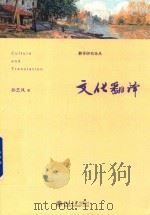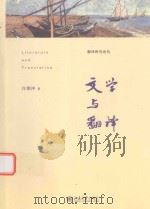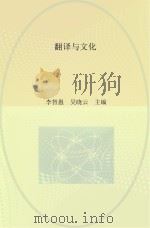《翻译与文化交流-翻译学新教程》
| 作者 | 郑声滔 编者 |
|---|---|
| 出版 | 成都:成都科技大学出版社 |
| 参考页数 | 177 |
| 出版时间 | 1996(求助前请核对) 目录预览 |
| ISBN号 | 7561629524 — 求助条款 |
| PDF编号 | 87569968(仅供预览,未存储实际文件) |
| 求助格式 | 扫描PDF(若分多册发行,每次仅能受理1册) |
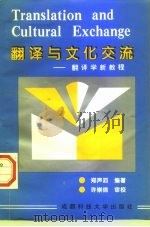
CONTENTS1
Preface Xu Chongxin1
Forword Zheng Shengtao2
CHAPTER ONE TRANSLATION AND CULTURAL EXCHANGE16
Section Ⅰ.Culture and Its Aspects16
Ⅰ.Definitions of Culture16
Ⅱ. Main Aspects of Culture17
1.Material Aspects of Culture18
2.Intellectual Aspect of Culture18
3.Communicative Aspect of Culture18
4.Institutional Aspect of Culture18
5.Conceptual Aspect of Culture18
Section Ⅱ Cultural Differences and Translation19
Ⅰ.Cultural Differences and Cultural Similarities19
Ⅱ.Cultural Distance and Translation21
1)Small linguistic and cultural distances22
1.Four Relations Between Linguistic and Cultural Distances22
Ⅲ.Linguistic and Cultural Distances22
2)Large linguistic and cultural distances23
3)Small cultural distance and large linguistic distance23
4) Small linguistic distance and large cultural distance23
2.Linguistic Distance Belongs to a Special Aspect of Cultural Distance23
1)Different cultural focuses result in different concentrations of vocabulary24
2)Semantic inequi valence results from cultural differences24
Ⅳ.Cultural Differences,Cultural Exchange and Translation25
1.Cultural exchange is one of the basic needs of modern human beings27
2.Cultural exchange is one of the distinguishing features of the emergence of every culture27
Section Ⅲ The Effects of Translation on Cultural Exchange27
Ⅰ.Cultural Exchange and Its Importance27
3.Cultural exchange is one of the prerequisites for the existence,development and flourishing of any culture28
4.Cultural exchange is the only way on which we arrive at a world culture28
5.Cultural exchange is one of the essential factors for the modernization of China29
3)Translation is a“short-cut”in Iearning from other cultures30
2)Translation breaks through cultual barriers30
1)Translation is the most importtant tool for intercultural communication30
1.Qualitative Analysis30
(Ⅰ)Translation is the Most Important Way for Cultural Exchange30
Ⅱ.Effects of Translation on Cultural Exchange30
2.Quantitative Analysis31
(Ⅱ)Translation Plays an Important Role in the Exchange of Every Aspectof Culture31
1.Material Aspect of culture31
3.Communicative Aspect of Culture32
2) Analysis from the writer32
1) Analysis from the development of literature32
2.Intellectual Aspect of Culture32
1) The survival of language33
2)The study of language and linguistics33
3) The introduction of loan words and borrowed expressions33
4)Language changes and universal language33
4.Institutional Aspect of Culture34
5.Conceptual Aspect of Culture34
Section Ⅳ A General Survey of Factors Affecting the Effects of Translation in Cultural Exchange35
Ⅰ.The Difficulty in Cultural Exchange Through Translation35
Ⅱ.Factors Involved in Cultural Exchange Through Translation36
AND METHODS OF TRANSLATION39
Section Ⅰ The concept of translation and Cultural Exchange39
Ⅰ.The Development of the Concept of Translation and Cultural Exchange39
CHAPTER TWO THE CONCEPT,CRITERIA39
Ⅱ.Our Definition of Translation40
3.Translation is a kind of intercultural communication41
4.Translation is mainly for cultural exchange41
2.Translation is the product of cultural exchange41
1.Translation itseff is the process of cultural exchange41
Ⅲ.In What Way the Deffmition of Translation Can Help Us42
1.It rem inds us of avoiding using superficially equivalent words or phrases with different cultural backgrounds in nature42
2.It requires us to avoid the nationalization of foreign culture in the interest of the reader42
Section Ⅱ The Criteria of Translation and Cultural Exchange43
Ⅰ.Different kinds of the Criteria of Trantslation and Cultural Exchange44
1.The Trinity Principle of Faithfulness,Expressiveness and Elegance44
2.The Equivalent-Effect Principle46
Ⅱ.Our Criteria of Translation,Put Forth From the Point of View of Cultural Exchange48
2) Replacing the cultural message of the SL text with that of the TL text intentionally or unintentionally49
1.The Informativeness of the Cultural Message Transferred From the SL text to the TL Text49
1)Misunderstanding of the cultural message of the SL text by the translator49
3)The missing of the cultural message of SL50
4) The adding of the cultural message50
2.The Effectiveness of the Transferring of the Cultural Message50
1)Maintaining the proper naturalness of the language used in translation51
2)Using the present-day TL in translation52
3)Interpreting where necessary53
Section Ⅲ The Methods of Translation and Cultural Exchange53
Ⅰ.Literal Translation or Semantic Translation54
1.Literal Translation and Its Justification54
2.Proper Literal Translation——The Most Effective Way for Promoting Cultural Exchange54
3.Situations for the Application of Literal Translation56
1)Important cultural symbols56
2)Cultural characteristics of the form of TL57
3)Quotations58
4.Word-for-word Translation and Extreme Literalism58
1.Free Translation and its advantages59
Ⅱ. Free Translation or Communicative Translation59
2.Proper Free Translation——An Effective Way for Promoting Cultural Exchange60
3.Situations for the Application of Free Translation60
1)Different expressions of the same objects or phenomena in different languages61
2)Homophones61
2)Changing the sentence structure of the original at will62
3)Replacing cultural symbols of the SL with those of the TL62
1)Undue extending of the original meaning62
4.Radically Free Translation——Blocking cultural Exchange62
4)Abstracting cultural symbols of SL textin TL test63
5)Adding cultural symbols of TL63
5.Combination of Literal Translation and Free Translation63
Ⅲ.Footnotes64
1.Making Footnotes and Its Justification64
1)Solving some problems of untranslatability64
2) Solving some problems of the unintelligibility of the TL text65
3)Avoiding misleading65
2.Making Good Footnotes——A Most Effective Way for Promoting Cultural Exchange Through Translation66
4)Avoiding the missing of the cultural message of SL text66
5)Increasing the knowledge of the TL reader66
1)Accuracy67
2)Ampleness67
3)Conciseness68
3.Types of Footnotes68
1)Literal translation with footnotes68
2)Free translation with footnotes69
3)Transliteration with footnotes69
4.Situations for the Application of Footnotes69
1)Providing supplementary cultural data on proper names70
2)Retaining figurative expressions70
3)Explaining physical objects of special phenomena unknown in TL culture70
4) Explaining contradictory customs70
5)Providing cultural information on plays on words71
6)Providing cultural information on allusions71
9) Indicating the original text that does not make sense72
8)Providing cultural background for TL reader to understand the translation better72
7)Explaining culturally over-loaded sentences of TL text72
10)Translating words,phrases or sentences in a third language of the SL text73
Ⅳ.Other Methods of Translation73
1. Transliteration and Borrowing——An Effective73
Way for retaining the Original Cultural Message and Enriching TLCulture73
1)Transliteration and its justification73
(1)Proper names75
2)Terminologies75
2)Situations for the application of transliteration75
(3) Objects,things and phenomena peculiar to the SL culture76
(4)Plays on words76
(5)Other situations76
2.Writing the Cultural Background and Other Supplementary Information into the Text76
1)Through the addition of necessary information.in parentheses77
2)Throughthe addition of appositives77
3)Through the addition of descriptive phrases77
Section I Proper Names79
CHAPTER THREE TREATMENTS OF SOME SPECIAL PHENOMENA OF SL AND CULTURAL EXCHANGE79
Ⅰ.Transferring the Most Possible Cultural Messange to the TL Text80
1.Preserving the Nationality of Proper Names80
1)Avoiding the using of words or characters which seem to be a TL proper name in translation81
2)Retaining the original order of proper names in the transliteration82
3)Transliterating on the basis of the original pronunciation of the third language proper names82
4)Direct borrowing of some SL proper names without any adjustmeni82
2.Avoiding the exchange of wrong cultural messages83
1)Incorrect pronunciation of SL proper names83
2)Transliterating proper names for peoples derived83
from proper names for places into Chinese83
3)Transliterating JapaneseKorean or Vietnamese proper names in an Engligh text into Chinese84
3.Conveying the Cultural Background of SL Proper Names Used Denotatively85
1)The gender of proper names for persons85
2)The same name used by the father and the son86
3)Chmese names used by some Westerners86
4)Names for persons containing names for places87
6)Diminutives88
5)Names consisting of given names and noble family names88
7)Cultural characteristies of the per sons or places referred to by proper names89
4.Transferring the Cultural Messages Literally Carried by Proper Names Used Both Denotativ■y and Connotalively89
1)Transliteration with footnotes91
2)Literal or semantic translation91
3)Combination of transliteration and literal translation92
1)Transliteration93
2) Transliteration with footnotes93
5.Retaining Both the Meaning and the Images of Proper Names Used Purely Denotatively93
3) Free or communicative translation with footnotes94
Ⅱ.Transferring the Cultural Messages of Proper Names Effectively94
1.Avoiding the Inconsistency in Transliteration94
2.Retaining the Traditionally Established Transliterated Forms of Proper Names95
3.Using Common Characters in Transliteration into95
Chinese95
Section Ⅱ Idioms96
Ⅰ.Literal Translation of SL Idioms97
1.Advantages of Literal Translation of Idioms in the Respect of Cultural Exchange97
1) Enriching the communicative(linguistic) aspect of TL culture by introducing new idioms or other fresh figurative expressions98
2)More understanding or five aspects of SL culture99
3) Transferring almost the whole cultural message carried by SL idioms101
2.Situations in which SL Idioms Can Be Literally Translated102
1) The SL idiom used in its literal sense102
2) The SL idiom used both in its literal sense and its figurative sense102
3) Other special contexts in which only literal translation can be used to render the SL idion103
4)The SL idiom with obvious figurative meaning shown itself103
5)Where the context will make the literal translation of the SL idiom acceptable to the TL reader103
6) When a SL idiom has a seemingly corresponding TL idiom which is quite different in nature from the SL jdiom103
3.Limitations of Literal Translation in Rendering ldioms104
Ⅱ.Literal Translation of Idioms With pootnotes105
1)To introduce allusiona of SL dioms106
2) To explain the cultural background or cultural106
characteristies of the images in SL idioms106
3)To indicate the figurative meaning of SL idioms107
4)To indicate the situations for the application of SL idioms107
Ⅲ.Literal Translation of Idioms With the Addition of Explanatory Phrases108
5)To explain the origins of SL idioms108
1.Indicating the Figurative Meaning of the SL Idiom109
1)In the form of a supplementary part following a dash109
2)In the form of a coordinate part109
3)In the form of logical predicate of the literal translation of the SL idiom109
4)In the form of another sentence109
5)In other form?110
2.Explaining the Cultura? Characteristics of the Cultural R?kground of the Image in the SL Idiom110
4.Indicating the Undertone or the Implied Sense111
3.Transla?ng the Omitted Part of the SL Idiom111
Ⅳ.Free Translation of Idioms112
1.The Necessity of Free Tradslation in Rendering Idioms112
2.Situations for the Application of Free Translatio? in Rendering Idioms113
1)Where incomprehensible TL text would otherwise be produced113
2)Where misunderstanding on the part of the TL ?eader would otherwise a?se113
3.Problems of Free Translation of Idioms in Limiting CulturalExchange113
Ⅴ.Free Translation of Idioms With Footnotes114
2) Avoidable sacrifice in the aspect of cultural exchange114
cultural exchange114
1)Unavoidable sacrifice in the aspect of114
Ⅵ.Using Equivalent or Corresponding TL Idioms115
1.The Possibility and Advantages of Using Equivalent or Corresponding TL Idioms115
2.Situations for Using Equivalent or Corresponding TL Idioms116
1)Same figurative meaning and same image116
2)Same figurative meaning and similar image116
3)Same meaning without any image in both the SL idiom and the corresponding TL idiom………………………(117 )4)Same meaning without any image in both the SL idiom but with an image in the TL Idiom117
5)Same figurative meaning and different images117
3.Problems Caused by Using“Equivalent”or“Corresponding”TL Idioms in Limiting Cultural Exchange118
1)Different figurative meanings118
2)Different emotional meanings120
3)Different situations for the application121
4.Different cultural background and national colouring122
Ⅶ. Combination of Literal Translation and Free Translation in Rendering Idioms123
1.Maintaining the SL Image by Literal Translation and Reorganizing to Suit TL Expression by Free Translation123
Ⅷ.Combination of Literal Translation and the Using of Equivaleut TL Idioms125
1.Treating Part of the SL Idiom With Literal Translation and the Rest of It by Using an Equivalent TL Idiom125
2.Treating the Main Part of t heIdiom With Literal Translation and the Rest of It With Free Translation……………………………(124 )3.Treating One Idiom With Literal Translation and the Other With Free Translation125
2.Treating the Whole SL Idiom With Literal Translation and Then Using an Equivalent TL Idiom to Explain the Meaning126
CHAPTER FOUR TREATMENTS OF CONCEPTUAL CULTURE IN TRANSLATION127
section Ⅰ Customs and Habits127
Ⅰ.Customs and Habits and the Importance of Treating Them Correctly in Translation127
1.Different Customs and Different Habits127
2.The Importance of Correct Treatment of Customs and Habits in Translation128
1.Avoiding Misunderstanding and Mistranslating Customs and Habits of SL Culture129
Ⅱ. General Principles for Correct Treatment of Customs and Habits in Translation129
2.Expressing the Different Customs and Habits of SL Culture Clearly and Faithfully in TL Text130
1) Customs and habits described or mentioned directly in the SL Text130
2) Customs and habits mentioned indirectly as part of the plots131
3) Customs and habits as the basis on which figurative expressions can be formed132
4) Names of cultural specialities associated with customs and habits132
5)Customs and habits reflected in everyday talks136
(1)Addressing people136
(2)Greetings137
1)Knowing customs and habits of TL culture well139
3.Avoiding the TL Receptor’s Misunderstanding of Customs and habits of SL Culture139
2)Sacrificing the expressing of the different customs and habits of SL Culture in TL text141
(1)The unimportant customs and habits reflected in some SL idioms141
(2)Different habits of expressing ideas,needs desires,feeling, etc.in intercultural contact142
Section Ⅱ Psychological Structure143
1.Different Psychological Structures and Their Reflections in the SLText144
1.Different Psychological Structures144
2.Reflections of Different Psychological Structures in the SL Text145
Ⅱ. General Principles for Correct Treatments of Different Psychological Structures Reflected in the ST Text146
1.Avoiding the Misunderstanding of the Different Psychological Structure Reflected in the SL Text on the Part of the Translator147
2.Expressing the Different Psychological Structure Reflected in theSLTextClearly and Faithfully in the TL Text148
3.Avoiding the TL Reader’s Misunderstanding of the Different Psychological Structure of the SL Culture149
Ⅲ.Explicit and ImplicitWays ofExpressing Personal Emotion150
1.Different Ways of Expressing Personal Emotion Between the Chinese People and the EnglishSpeaking People150
2.IncorrectTreatments of the Different Ways of Expressing Personal Emotion in Translation151
1)From Implicitness to explicitness151
(1)Adding Some words explicitly denoting the implied meaning151
(1)Replacing simple words with more learned ones152
(2)Replacing the SL image with TL explanatory phrases152
2)Fromexplicitness to implicitness152
(2) U sing allusions in place of words or phrases explicitly stated153
3.Correct Treatments of the Different Ways of Expressing Personal Emotion in Translation153
Ⅳ.Different Terms for Psychological Experience or States155
Ⅴ.Different Psychological Responses and Different Associative Meanings156
1.Various Reasons for the Difference156
1)Different geographical conditions157
2)Different linguistic resources157
3)Different literary traditions157
4)Different myths and different legends158
2.Various types of the Differences158
1)Same images and different symbolically associative meanings158
2) Same image and different figuratively associative meanings159
3)Same image and different aesthetically associative meanings160
Appendix 1 Summary in Chinese162
Appendix 2 Works Cited171
1996《翻译与文化交流-翻译学新教程》由于是年代较久的资料都绝版了,几乎不可能购买到实物。如果大家为了学习确实需要,可向博主求助其电子版PDF文件(由郑声滔 1996 成都:成都科技大学出版社 出版的版本) 。对合法合规的求助,我会当即受理并将下载地址发送给你。
高度相关资料
-
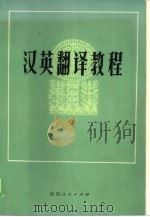
- 汉英翻译教程
- 1983 西安:陕西人民出版社
-

- 法汉翻译教程
- 1984
-

- 德汉翻译教程
- 1985.04 上海外语教育出版社
-
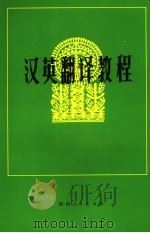
- 汉英翻译教程
- 1983年07月 陕西人民出版社
-
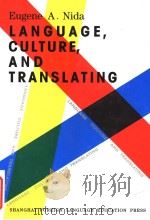
- 语言,文化与翻译
- 1993 上海:上海外语教育出版社
-
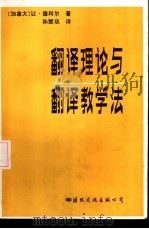
- 翻译理论与翻译教学法
- 1988 北京:国际文化出版公司
-
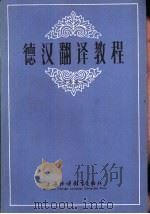
- 德汉翻译教程
- 1985 上海:上海外语教育出版社
-
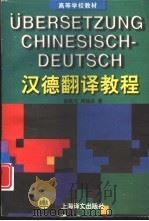
- 汉德翻译教程
- 1998 上海:上海译文出版社
-
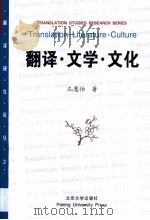
- 翻译·文学·文化
- 1999 北京:北京大学出版社
-
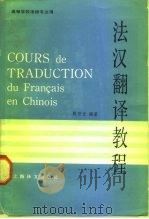
- 法汉翻译教程
- 1984 上海:上海译文出版社
-
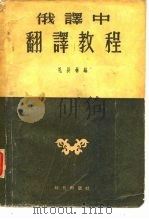
- 俄译中翻译教程
- 1955 时代出版社
-

- 新编汉西翻译教程
- 1999 北京:外语教学与研究出版社
提示:百度云已更名为百度网盘(百度盘),天翼云盘、微盘下载地址……暂未提供。➥ PDF文字可复制化或转WORD
